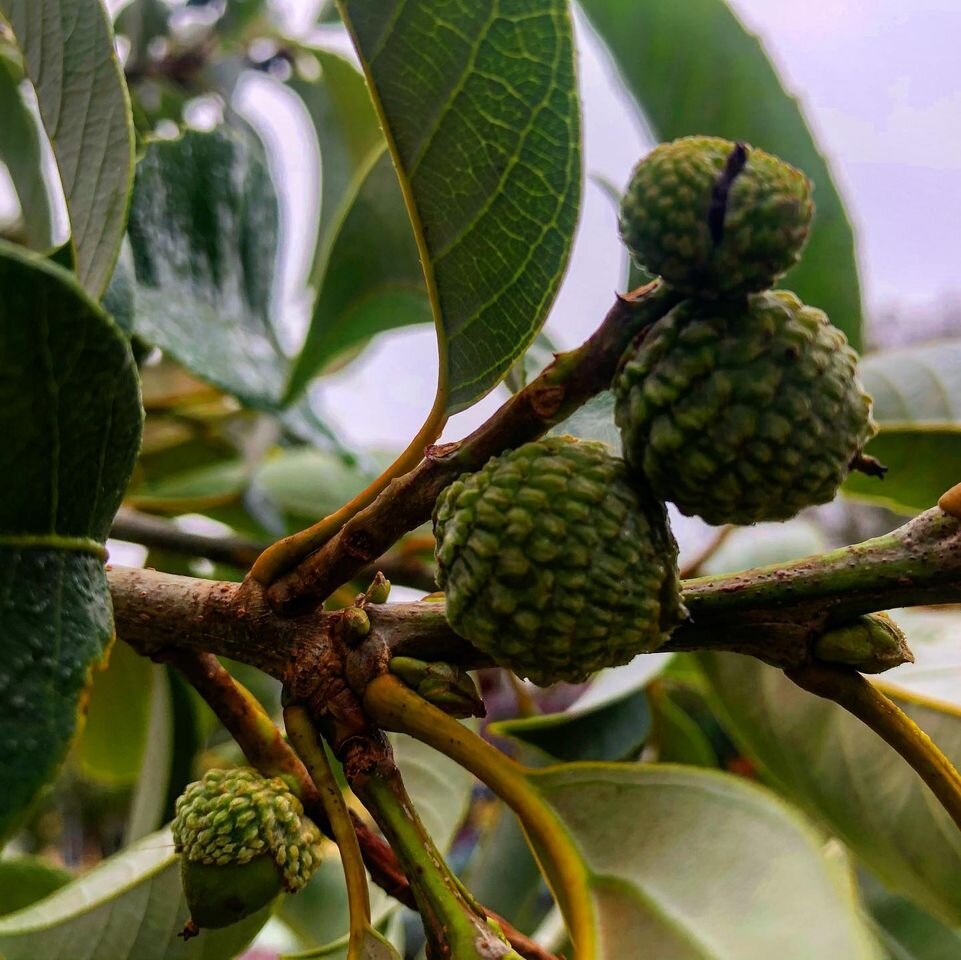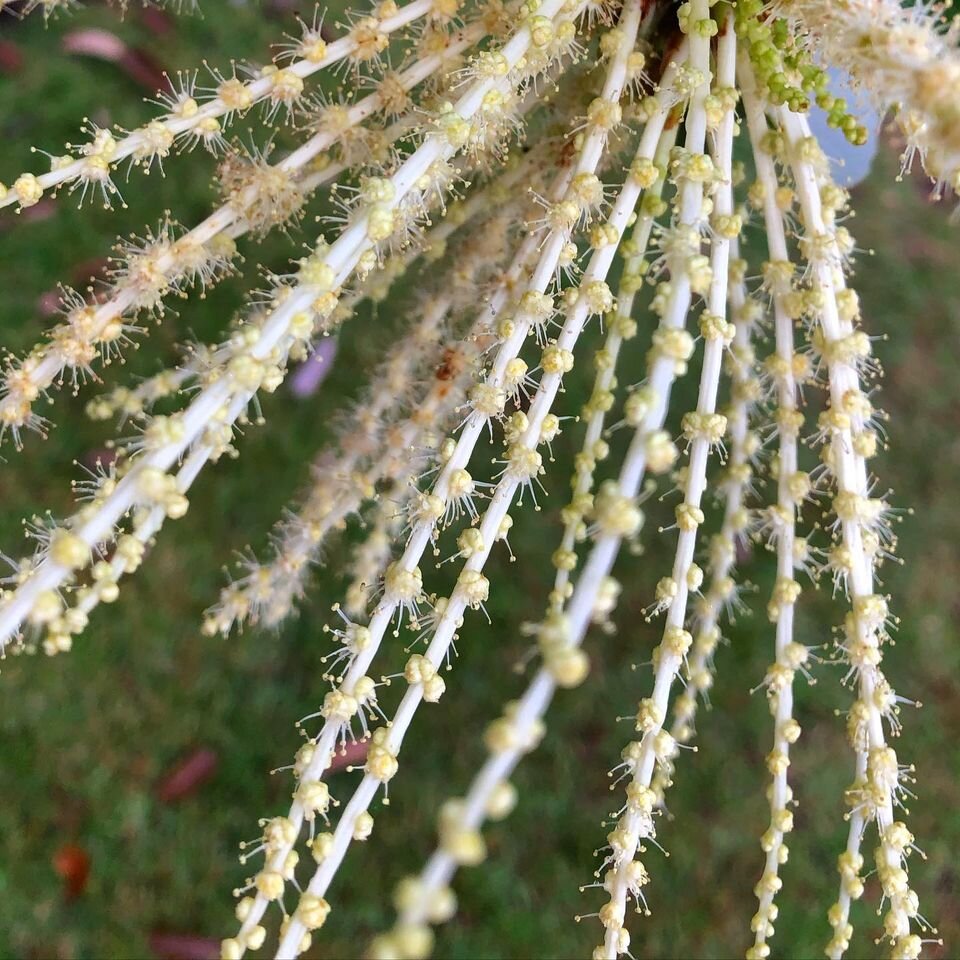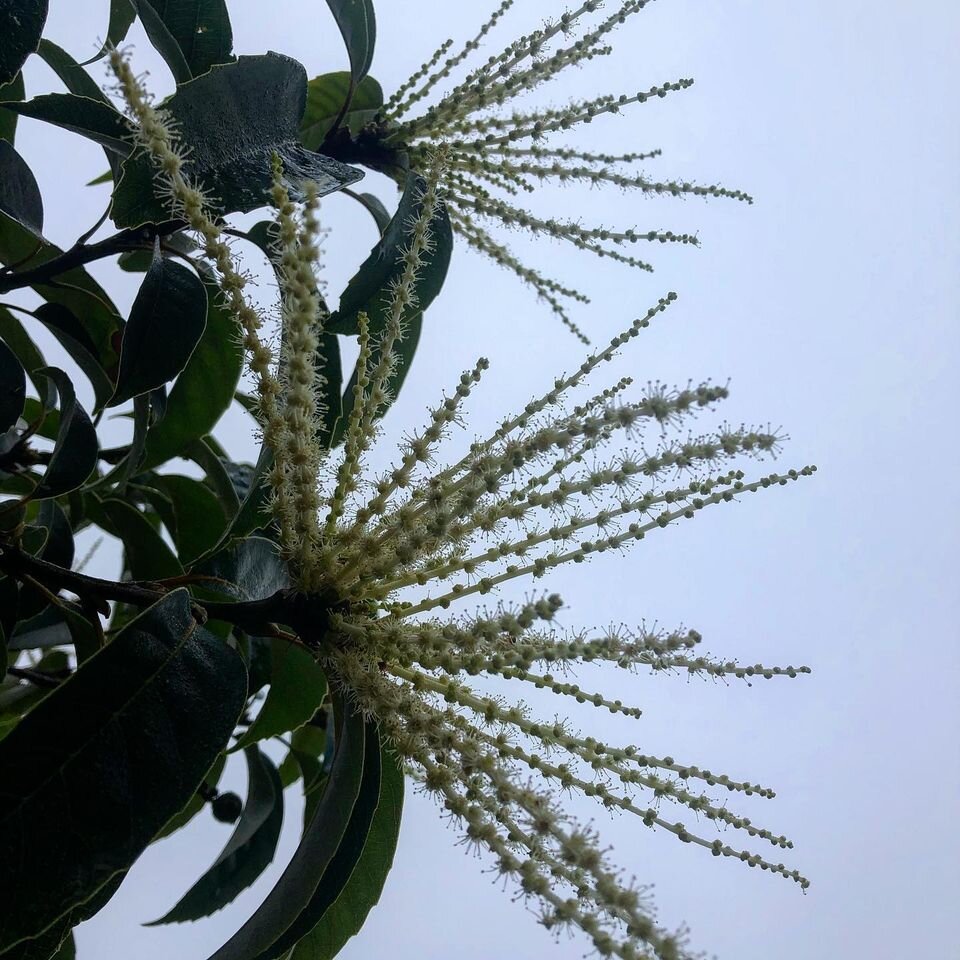Castanposis sclerophylla is commonly referred to as “chinquapin” . This evergreen tree is part of the beech family, Fagaceae. There are 120 species within the genus Castanopsis, primarily reigning from tropical and subtropical Eastern Asia. From that I assume this is best grown in zones 7-10.
I’ve only grown 2 species: Castanopsis delavayi and C. sclerophylla, shown here. Both are planted at the JC Raulston Arboretum, which is where I think I got the seed from.
This was planted almost 10 years ago, and struggled to get established through the first few winters when temps went to single digits. In fact after it died to the ground twice, I contemplated removing this tree. However now, I really adore it and I’m glad I gave it chance to rebound.
Usually it blooms in late spring and has a HORRIBLE scent- basically the smell of “plant sex”. I was very surprised to see it blooming now, hence the motivation to feature it as a plant profile.
The flowers are unisexual, with male blooms forming erect catkins, as seen here. The epigynous female flowers produce a single seed each but are congregated in small clusters. The fruit/ nut/ seed is a actually a calybium and resembles a pointed acorn.
For that reason, I’ve always associated this with “evergreen oaks” but that is completely incorrect. It’s actually more closely related to the chestnut, Castanea. Yet another reason to do some research on the plants you have growing in your landscape- there is endless information to discover!







